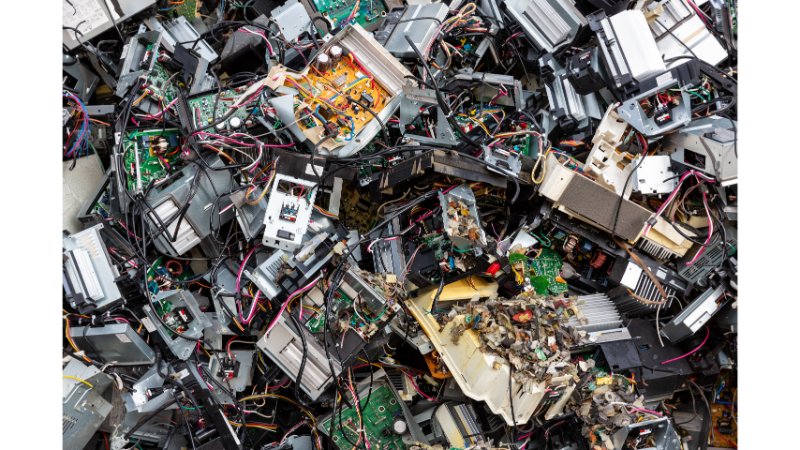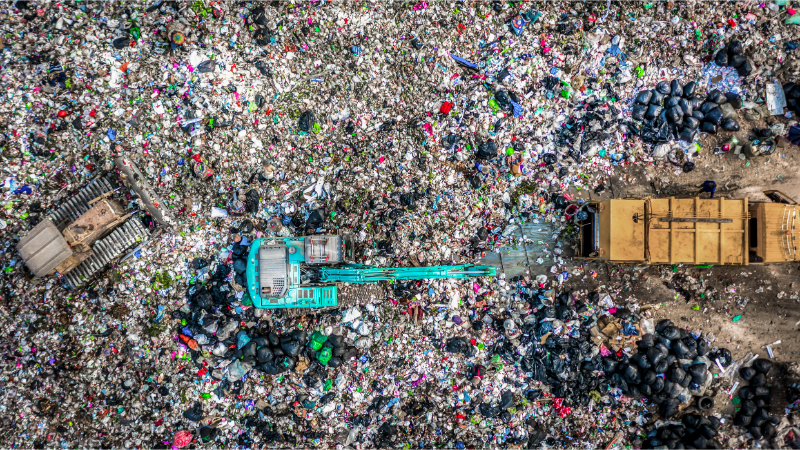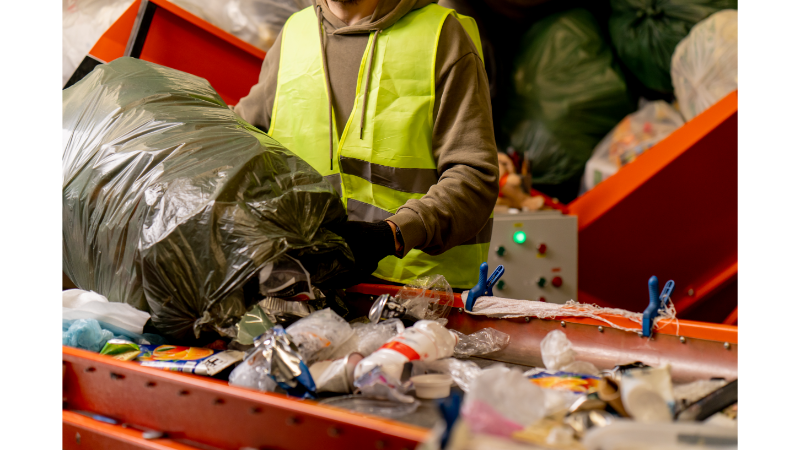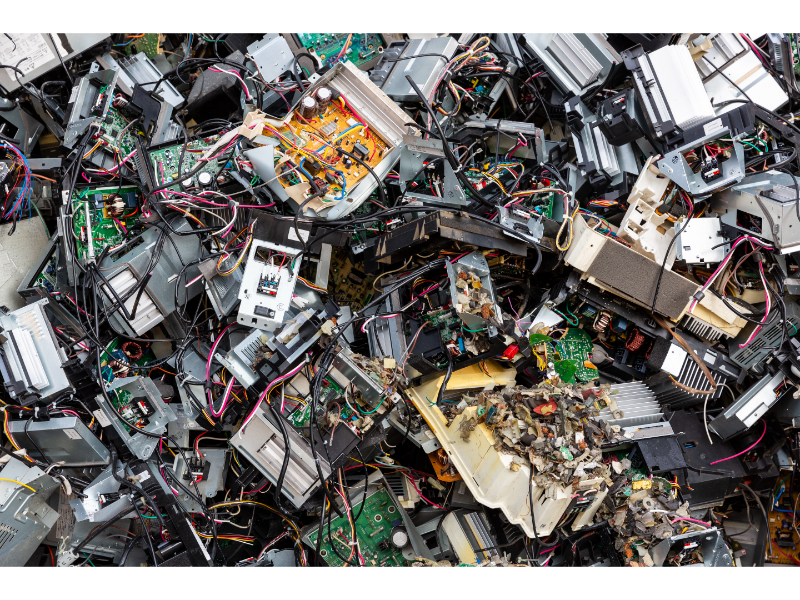With the rapid advancement of technology today, the lifespan of electronic devices is shortening. As a result, the amount of electronic waste (e-waste) is steadily increasing. This situation brings significant environmental and economic challenges. Because electronic waste contains hazardous materials, it can cause severe pollution when released into nature. It may also pose serious risks to human health.
However, when managed properly, electronic waste can be recovered due to the valuable metals and raw materials it contains. At this very point, Burkasan steps in. With 25 years of experience in waste management and recycling, Burkasan provides comprehensive and sustainable solutions to prestigious brands across Turkey.
Table of Contents
- What is Electronic Waste?
- Effects of Electronic Waste on the Environment and Human Health
- Electronic Waste Recycling
- What Are Electronic Wastes?
- Companies Receiving Electronic Waste
- Corporate Electronic Waste Management
- Frequently Asked Questions
- Conclusion
What is Electronic Waste?
Electronic waste refers to electrical and electronic equipment that has reached the end of its useful life. This broad category includes many products. From mobile phones to computers, televisions to household appliances, and small devices to medical equipment. The wide variety of electronic waste means it contains hazardous substances like lead, mercury, and cadmium. It also contains valuable metals such as gold, silver, and copper. For this reason, uncontrolled disposal of e-waste can lead to environmental problems. It may cause soil and water pollution, deterioration in air quality, and serious harm to human health. Because these hazardous substances can have long-lasting effects on the environment for many years.
The amount of electronic waste is steadily increasing in both Turkey and around the world. Changing consumption habits and the rapid renewal of technological products drive this trend. Therefore, proper management and recycling of e-waste are of vital importance. They are essential for environmental sustainability and efficient use of resources.

Effects of Electronic Waste on the Environment and Human Health
If not disposed of properly, electronic waste can cause serious harm to the environment and human health. Because these wastes contain many substances that are harmful to nature. For example, old CRT televisions and monitors contain lead in their tubes. If discarded and their glass breaks, the lead may seep into soil and groundwater. Similarly, fluorescent screens and energy-saving bulbs contain mercury. When mercury vapor is inhaled, it has toxic effects on the nervous system and internal organs. Additionally, cadmium in electronic circuit boards and brominated flame retardants in plastics are harmful. When released into the environment, they contaminate soil and water.
According to a United Nations report, 58 tons of mercury and 45 million kilograms of brominated plastic are released into nature annually. This is due to uncontrolled dumping of e-waste. As a result, electronic waste has the potential to cause lasting damage to ecosystems and human health if not treated properly.
Beyond environmental impact, another major concern of e-waste is data security. Especially when computers, smartphones, or external drives become waste, they may still contain sensitive data. Personal data or confidential corporate information can be misused if accessed by the wrong hands. Therefore, it is essential to delete or destroy data before discarding such devices. This shows that e-waste must be managed correctly not only for the environment, but also for information security.
Electronic Waste Recycling
Electronic waste recycling is the process of recovering reusable materials from e-waste and returning them to the economy. This process involves several steps. First, e-waste is collected. Then, it is dismantled and sorted in appropriate facilities. Finally, valuable materials are recovered through specific methods. For example, when a discarded computer is processed at a recycling facility, its plastic casing, metal components, circuit boards, and cables are all classified separately. Each material is then processed using suitable techniques and made reusable as raw material.
Approximately 60% of e-waste consists of metals (iron, copper, aluminum, etc.). About 20% is plastic, and the remaining 20% consists of materials like glass and ceramics. With proper recycling techniques, it is possible to recover 95–99% of second-hand raw materials from e-waste. This prevents the waste of natural resources and reduces pollution caused by discarded materials.
The greatest benefits of e-waste recycling are environmental protection and building a sustainable economy. Through recycling, toxic substances in discarded devices are separated and disposed of safely. Elements such as mercury and lead are prevented from contaminating soil and water. At the same time, valuable metals like gold, silver, and palladium are recovered and returned to the economy. Globally, the total value of precious metals in e-waste reaches billions of dollars. If not recycled, about $10 billion worth of resources are lost each year. Recycling also reduces the need for new mining. It saves energy and lowers the carbon footprint.
As a result, e-waste recycling plays a critical role in environmental sustainability. At the same time, it is an indispensable element that generates economic value.

What Are Electronic Wastes?
Electronic waste refers to devices that are no longer usable or have reached the end of life. This includes computers, phones, printers, TVs, small household appliances, and various types of batteries. These wastes contain hazardous materials like lead, mercury, and cadmium. Such substances can harm the environment and pose risks to human health. However, waste also holds valuable metals like copper, gold, and rare earth elements. Proper recycling in certified facilities helps recover these resources and prevent environmental contamination. Accurate separation and disposal of electronic waste is essential for a sustainable and responsible future.
Companies Receiving Electronic Waste
To manage this type of waste properly, it is essential to work with reliable companies. These companies must be licensed. Licensing ensures that the process is conducted legally and in an environmentally responsible manner.
Because legal regulations require electronic waste to be collected and transported according to specific standards. Moreover, recycling of this waste is also mandated by legislation. Operations carried out by unlicensed and unauthorized companies can cause serious environmental damage. They can also create legal risks for businesses. Therefore, it is crucial to verify the qualifications of the company you entrust your e-waste to. You should make sure that the company holds the necessary permits and certifications. Established and experienced companies like Burkasan ensure that e-waste is managed in compliance with regulations. They also contribute to ensuring that the process is environmentally sound. Burkasan uses technologies that comply with international standards in the collection, transportation, and recycling of waste. At the same time, it offers its customers transparent and reliable service.
Electronic waste collection solutions specifically designed for corporate clients provide great convenience to businesses. This enables them to fulfill their waste management responsibilities efficiently and consistently.
Corporate Electronic Waste Management
Electronic waste management carries great importance in terms of both legal and corporate social responsibility. Companies utilize numerous electronic products, including computers, servers, industrial electronic devices, and office equipment. With technological advancements and business growth, these items undergo periodic replacement. This process leads to the generation of a substantial quantity of electronic waste. Consequently, the optimal approach for companies involves establishing a thorough e-waste management strategy.
Initially, businesses must segregate their electronic waste at its source and ensure its storage remains separate from other waste streams. Hazardous e-waste, such as items containing batteries, toner, and fluorescent lamps, necessitates specialized containment. This practice not only prevents unnecessary accumulation within office spaces but also guarantees the secure disposal of the waste. Particularly at the corporate level, safeguarding data security requires the complete erasure of information from device storage units before these devices are relinquished. When necessary, this data should undergo complete destruction through physical methods. Numerous professional e-waste recycling firms also offer data destruction certificates upon request.
Engaging professional waste management services represents the most efficient solution for corporate entities. These companies offer e-waste collection and recycling services spanning a wide spectrum, from industrial complexes to office environments. BURKASAN delivers integrated waste management services to over 300 industrial establishments across numerous provinces in Turkey. This ensures the consistent collection and processing of e-waste in compliance with relevant regulations. Collaborating with a corporate recycling partner significantly alleviates the operational demands on companies. Furthermore, it fosters the development of an environmentally responsible brand image. Ultimately, companies that prioritize e-waste management not only meet legal obligations. They also make substantial progress toward achieving their sustainability objectives.

Frequently Asked Questions
What does electronic waste mean?
Electronic waste encompasses electrical and electronic devices that have reached the end of their useful life or are no longer needed. These devices become waste when they cease to function. For example, non-working televisions, broken white goods, and unused computers are examples of electronic waste.
Why is it harmful to throw away electronic waste in the trash?
Disposing of e-waste in regular household trash is harmful to the environment and health. This is because these wastes contain toxic substances such as lead, mercury, and cadmium.
How should companies manage their electronic waste?
When managing their e-waste, companies must first collect these wastes separately from other wastes. Devices that are out of use, such as computers, printers, and servers, should be inventoried and stored in a secure area.
What are the benefits of electronic waste recycling?
Recycling electronic waste has many benefits. Firstly, it protects the environment; the mixing of harmful substances in e-waste into nature is prevented, and the load going to waste storage areas is reduced. Secondly, valuable materials are recovered for the economy.
Conclusion
The e-waste problem is an inevitable consequence of modern life and technological advancement. Both individual users and corporate firms must act responsibly when managing their consumption of electronic devices. Random disposal of these wastes into the environment leads to the poisoning of soils and waters. However, thanks to recycling, both the environment is protected and economic value is created.
As a result, popularizing the management and recycling of electronic waste is of great importance. Collaborating with recycling companies is one of the most important steps in this process. Also, it is everyone’s shared responsibility. BURKASAN is one of the leading organizations operating in Turkey regarding electronic waste. It is a reliable business partner. Working with such firms is one of the most effective ways to recycle safely. Let us not forget that the actions we take today.
You can visit our blog page to read our other articles.

